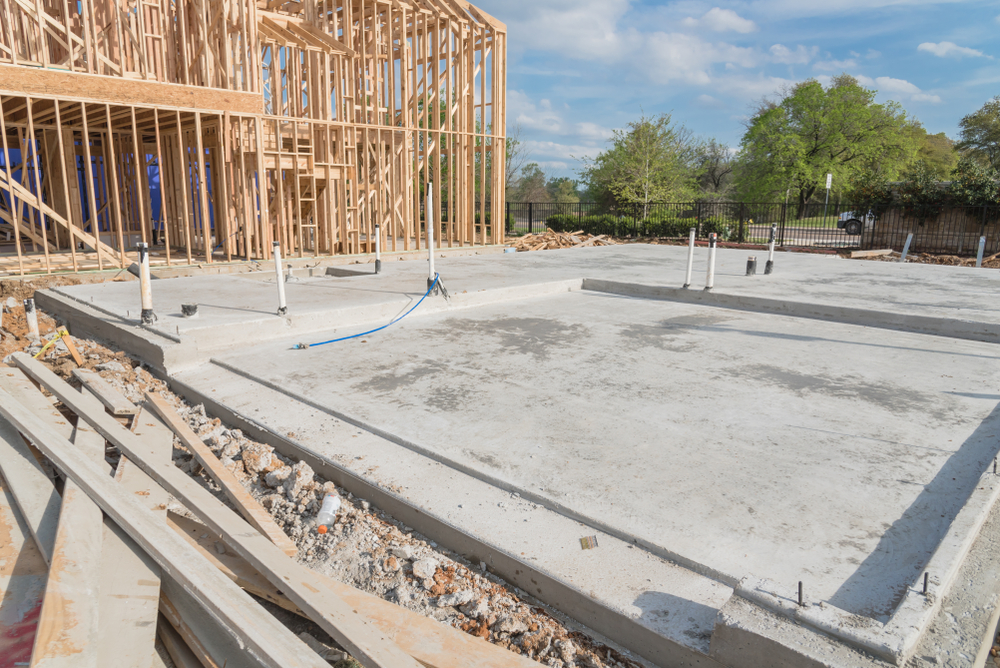You know that insulation is necessary for many spaces in a home. A home should have insulation in the walls, the crawl spaces, and the attic- but what about under the flooring?
Applying spray foam under a concrete slab is an excellent way to provide a leveling, cushioned support system for your concrete flooring while protecting your home from the elements.
What benefits does spray foam have under concrete, exactly? What can it protect you from? How do you apply spray foam under a concrete slab, and is it anything like using spray foam to level an existing slab?
Read on to learn everything you need to know about using spray foam under concrete slabs!
Why Would You Use Spray Foam Under Concrete Slab?
Spray foam is known primarily as an insulating material, and it serves very well in this respect as just two inches can grant you an R-value of R-14.
When used under concrete slabs, you can prevent temperatures rising from the ground from affecting the climate of your home.
However, temperatures are not the only thing that spray foam insulation can protect your home from.
Spray foam insulation is an excellent vapor barrier, protecting your concrete slabs from water damage that might form during early-morning condensation underneath your pad or from rising groundwater levels.
Additionally, closed-cell insulation is an excellent radon blocker.
In the modern era, installing a radon blocker under the floor of your home is a clever idea to protect yourself and your family from harmful chemicals in the earth or your pipes, and spray foam accomplishes this swimmingly.
When NOT To Do This?
If you are pouring particularly thick concrete, adding spray foam insulation under your concrete slabs may not be the ideal option for you.
Spray foam is strong and seamless, but concrete is notoriously heavy. A dense concrete slab and a more flexible variety of spray foam, such as open-call, may result in uneven supports that lead to tilting or cracking in your concrete.
What Spray Foam To Use Under Concrete Slab?
When applying spray foam under a concrete slab, opt for closed-cell when possible. Closed-cell spray foam is more rigid than open-cell and, as such, provides a better support system for your concrete slabs.
Additionally, you only want around 2 inches of spray foam to meet an R-value target of around R-10 and act as an optimal vapor barrier. Ultimately, you do not want one of the ultra-expanding spray foam varieties. When working under concrete slabs, density and durability are key.
How to Properly Apply Spray Foam Under Concrete Slab
When you’re using spray foam to level an existing concrete slab, you simply lift the slab and spray the foam underneath it. However, this is not the case with insulation.
You will have to apply your spray foam before your concrete. Thankfully, for the spray itself, you won’t need any different tools or kits than usual.
1. Lay Out Crushed Rock
Crushed rock might seem like it came out of nowhere, but surprisingly, crushed rock is an excellent option as a substrate for spray foam.
Lay out a thin layer of crushed rock around your workspace, roughly one inch thick. The multiple gaps and pits between the crushed rocks create plenty of space for the spray foam to adhere to, further improving its sturdiness.
Make sure to use crushed rock rather than chat, as the smaller size of gravel may prevent your spray foam from gaining as much of a hold on its surroundings as it could.
Rake this layer of crushed rock smooth so that sharp edges do not stick up and make an uneven layer.
Additionally, you must ensure that your gravel is as dry as possible to best bond with the foam- consider installing a primary layer of the vapor barrier to prevent the gravel from absorbing moisture before or as you work.
2. Apply PPE
One of the most vital steps whenever you work with spray foam, in any context, is applying personal protective gear, also known as PPE.
In this scenario, your PPE should consist of a full-body covering, a respirator, eye protection, and gloves.
Spray foam emits toxic gasses as it cures for up to 24 hours, so PPE protects you from inhaling them and experiencing side effects such as nausea and headaches.
Do not only wear your PPE while applying spray foam. Anybody working in the area for 24 hours after installation should wear PPE, regardless of whether they are insulation installers or carpenters.
3. Apply Spray Foam
Next comes applying the spray foam. Wearing your PPE, spray wide, long, even strokes along the layer of crushed rock and let it expand until you have a two-inch layer.
If you miss a spot or one area has a thinner layer than you intended, don’t be afraid to revisit and add another layer.
Applying spray foam is easy, but it takes practice to know exactly how much you are spraying at any given moment.
4. Let Cure
Before doing any more work on the floor, you have to let the spray foam cure. Spray foam takes about 24 hours to cure fully, or a full day.
Your PPE may protect you from toxic gasses during this period, but that is not the only reason to wait. While it cures, spray foam is soft and malleable, and any work can distort it to an unworkable level.
5. Add Concrete
Finally, you can add your concrete slabs. There are many different methods you can use to install concrete, from using wireframes to mesh supports.
Either way, once your spray foam has cured, it is ready for concrete and you are one step closer to completing your projects!





